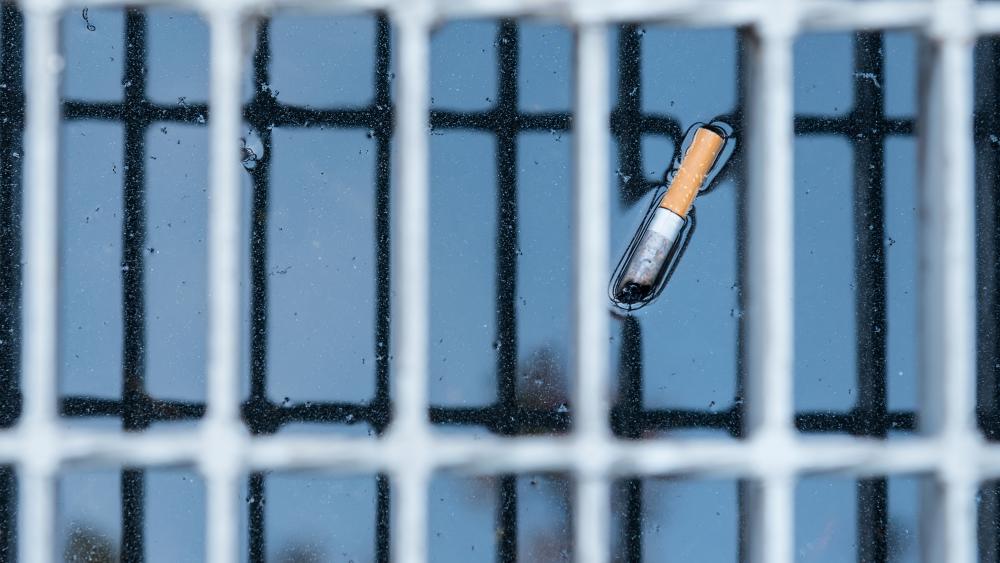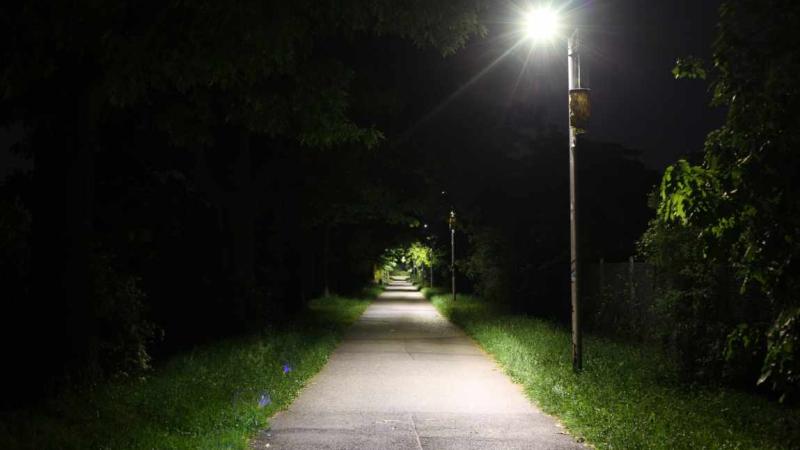
Exemplary photo: Cigarette butt discarded outdoors. | Photo: shutterstock_1036273693
During a seven-week monitoring programme, the IGB research team examined fifty-six water samples from fourteen lakes, nine ponds, nine rivers, eight canals and two canalised streams in Berlin in summer 2019. Nicotine was detected in concentrations of between 7 and 1,500 nanograms per litre in all of the surface waters examined. The average value was 73 nanograms per litre.
The main factor is rain, which washes out the nicotine from discarded butts
Cigarette butts are the main source of nicotine in the environment in this country since the use of nictotine as an insecticide was banned in the EU in the 1980s. According to a study from 2022, between 76 and 90 per cent of all smoked cigarettes are disposed of improperly in the environment, making them the main source of waste in cities. And a cigarette butt still contains around 2 milligrams of nicotine. Cigarette butts discarded outdoors either end up directly in bodies of water, but this only accounts for a small proportion of nicotine pollution. “The main factor is actually precipitation or discharges from the sewage system”, said IGB researcher Dr Markus Venohr, head of the study. Nicotine is highly water-soluble, meaning that around half of it is washed out by rainwater after around 30 minutes.
After heavy rainfall, concentrations in canals are up to 16 times higher
The study shows that nicotine concentrations vary depending on the type of water body. They were highest in canals, followed by ponds, rivers, lakes and canalised streams. Direct discharges via precipitation and the supply of rainwater via the sewerage system have the greatest influence: In surface waters with rainwater discharges the average nicotine concentrations were around twice as high as in waters without such inlets. After heavy rainfall, nicotine concentrations increased significantly, especially in canals, where they were up to 16 times higher.
The Krumme Lanke: a special case on the outskirts of Berlin
The study also shows that nicotine concentrations in water bodies connected to the sewage system increase with population density when it rains. In surface waters without a connection to the sewage system, the concentrations tended to correlate with the influence of public transport stops or local recreation areas; the researchers found higher concentrations in the city centre, with one exception: the Krumme Lanke in Zehlendorf, which is used intensively as a local recreation area in summer and is therefore probably more polluted.
The nicotine concentrations measured are harmless for most organisms, but caution is advised during heavy rainfall
Depending on the literature cited, the nicotine concentrations measured in Berlin's surface waters were sometimes above the ‘Predicted No Effect Concentration’ (PNEC) for aquatic organisms. However, they do not reach lethal levels. For ten different freshwater fish species, for example, a lethal dose of between 2,210 and 8,450 nanograms per litre is cited for one-week exposure. For smaller organisms, such as daphnia, however, the PNEC concentration is as low as 100 nanograms per litre.
“In order to assess the toxicological relevance of the observed concentrations, we would need to know the long-term average concentrations in surface waters; our study was only a snapshot”, said Markus Venohr. Analyses of bodies of water in other cities have sometimes revealed significantly higher nicotine levels. In Madrid, for example, an average value of 527 nanograms per litre was measured. However, the researcher is not giving the all-clear: “Given the general decline in water levels and the increase in heavy rainfall events, nicotine pollution in inner-city waterways could also become a problem in Berlin. In addition, cigarette butts release a whole cocktail of potentially harmful substances that, individually or collectively, can have a much greater ecological impact.”




